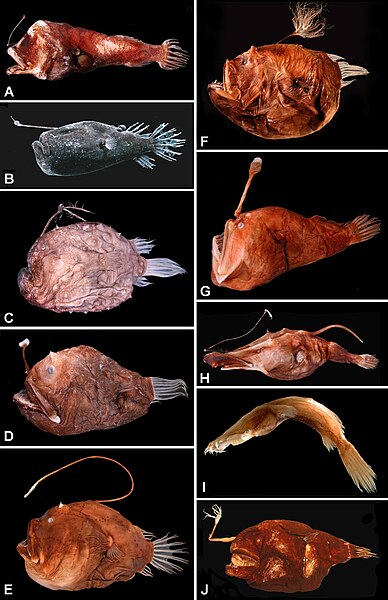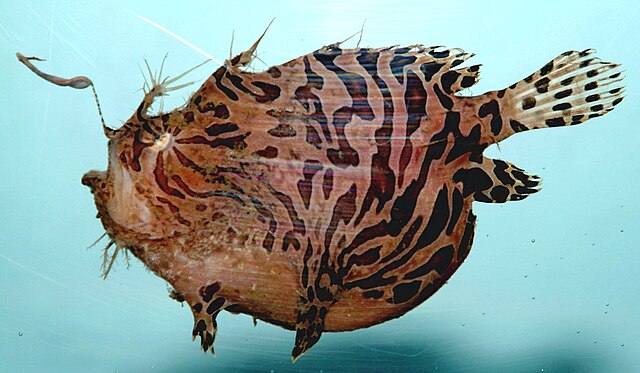The sea toads and coffinfishes are a family, the Chaunacidae, of deep-sea ray-finned fishes belonging to the monotypic suborder Chaunacoidei within the orderLophiiformes, the anglerfishes. These are bottom-dwelling fishes found on the continental slopes of the Atlantic, Indian, and Pacific Oceans, at depths to at least 2,460 m (8,070 ft). There have also been findings of deep-sea anglerfishes off the coasts of Australia and New Caledonia. Other findings suggest some genera of Chaunacidae are found near volcanic slopes encrusted with manganese. Of the two genera in the family, Chaunacops are typically found at deeper depths than Chaunax, but with considerable overlap between the two genera.
Sea toad
Chaunax pictus
The anglerfish are fish of the teleost order Lophiiformes. They are bony fish named for their characteristic mode of predation, in which a modified luminescent fin ray acts as a lure for other fish. The luminescence comes from symbiotic bacteria, which are thought to be acquired from seawater, that dwell in and around the sea.
(A) Centrophryne spinulosa, 136 mm SL (B) Cryptopsaras couesii, 34.5 mm SL (C) Himantolophus appelii, 124 mm SL (D) Diceratias trilobus, 86 mm SL (E) Bufoceratias wedli, 96 mm SL (F) Bufoceratias shaoi, 101 mm SL (G) Melanocetus eustalus, 93 mm SL (H) Lasiognathus amphirhamphus, 157 mm SL (I) Thaumatichthys binghami, 83 mm SL (J) Chaenophryne quasiramifera, 157 mm SL.
Red-lipped batfish
Striated frogfish (Antennarius striatus)
Skeleton of the anglerfish Lophius piscatorius: The first spine of the dorsal fin of the anglerfish acts as a fishing rod with a lure.






